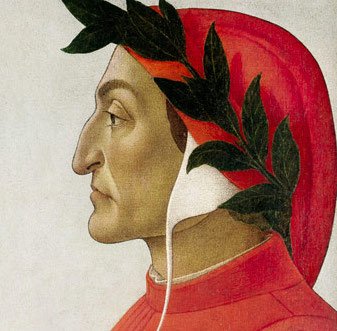A New Translation of Dante’s ‘Divine Comedy’ Emerges for the Age of Taylor Swift
The medieval masterwork, a poetic burn book in terza rima, feels matched to a moment where grudges can graduate into greatness.

‘The Divine Comedy,’ by Dante Alighieri
Translated by Michael Palma
Liveright, 624 Pages
The poet Dante Aligheri’s “Commedia” — it picked up “Divine” somewhere along the way — may seem an unlikely contender for relevance. Written 800 years ago, it can feel watermarked by the Middle Ages. For Dante, Inferno, Purgatory, and Paradise were not metaphors but sites on a map. His world was one of heaven and hellfire, his faith conveyed in triptychs telling of the Trinity, popes, and friars. It smelled of incense and was professed with bent knees.
That makes it all the stranger that a new translation of all three volumes of Dante’s poem feels au currant. It is not just that the translator, Michael Palma, has delivered an exultant epic in English that reads like a song while keeping faith with Dante’s terza rima form. The sheer strangeness of the “Commedia” appears keyed to this moment where politics is personal and grudges become trust for song lyrics that reach millions.
Dante, with postmodern daring, made himself the protagonist of his own poem. It is an epic that doubles as an autobiography, in the way a song by, say, pop star Taylor Swift takes personal heartbreak and scores it for a billion voices. His guide to the tripartite cosmos is the Roman poet Virgil, author of the “Aeneid,” whose only flaw is that he was born before Dante’s savior completed his mission. Dante’s saintly sponsor is his great love, Beatrice.
Part of the pleasure of the “Commedia” flows from Dante’s status as an interloper in eternity with a golden ticket to God’s great scheme. The scenes Dante paints are remarkable for their unnerving specificity. The poet encounters celebrities during his journey — Achilles, Satan, Homer, Judas, Thomas Aquinas, David — but also figures who were local to 13th century Florence. Obscure to us, but not to Dante: His grudges grew into eternity.
While this local color is perhaps the greatest obstacle to the contemporary reader, it also gives the “Commedia” the piquancy of a burn book. One shade asks about Dante: “Who is this man who dares to traipse about through the kingdom of the dead without having died?” The poet, though, is our correspondent in the demesne of the dead, reporting on a “mad uproar that never ends, revolving in that timeless darkened breeze.”
A cleric whom Dante knew and tested at Florence is described as “exiled from the Arno to the Bacchiglione, where he left the distended nerves he had defiled.” The reference is opaque, but the animosity is as transparent as a pane of glass. Dante so despised Pope Boniface VIII that he placed him in the eighth circle of Hell, reserved for those seduced by simony — even though that Vicar of Christ was still alive when the poet condemned him.

The most apt comparison to this kind of conversion of life into art could be Ms. Swift, whose litany of ex-boyfriends have nourished songwriting that has handed up hits. Take “Dear John,” believed to be about her romance with another singer, John Mayer. One can imagine Dante nodding in appreciation at her vow to shine “like fireworks over your sad empty town.” He could have reckoned the same in respect of Florence, from which he was banished.
Dante’s metier is God’s grand design, but his paintbrush can deliver details as well. He observes a “gross belly and huge clawlike hands,” and records how “shades were flattened by a hard downpour,” perhaps anticipating Bob Dylan’s “A Hard Rain’s a-Gonna Fall.” The poet T.S. Eliot would later swipe the vision of shades arrayed in an “endless line as far as I could see. That death had undone so many, I had not dreamed.”
A criticism of the “Commedia” is that it loses steam as it ascends to heaven. It is true that the “Puragatorio” and “Paradiso” lack the gruesome glory of the “Inferno.” Reading Mr. Palma’s rendering of the epic, though, is a reminder that Dante rarely faltered. Purgatory, the transit zone between virtue and vice, is marked by fluidity, and paradise has a static splendor, backlit by incandescent faith. It is a creation of which the Creator would be proud.

